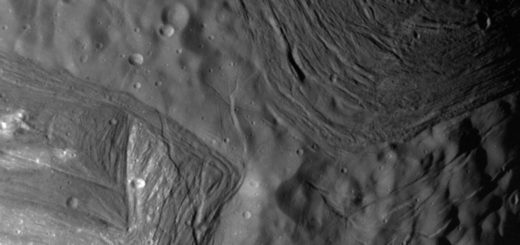There Are ‘Tens Of Billions’ Of Habitable Planets In Our Galaxy, Astronomer Seth Shostak Says

The question of whether humans are alone in the universe may have an answer sooner rather than later.
The search for extraterrestrial intelligence (SETI) has always been a needle-in-a-haystack effort, utilizing radio and optical telescopes to seek out alien signals from deep space. In the past few years, thanks to NASA’s extraordinary Kepler spacecraft, many extrasolar planets have been discovered, expanding the potential for finding habitable worlds.
“Unfortunately, it’s probably still a needle-in-a-haystack because we don’t know how many needles are out there,” said Seth Shostak, senior astronomer at the SETI Institute in California.
“What we do know that we didn’t know, even a year ago, is what fraction of stars have planets that might be habitable,” Shostak told The Huffington Post. “And these days, the answer is maybe one in five. That’s a preliminary analysis of Kepler data. We now know that there are going to be lots of worlds out there where you could have life.
“The number of habitable worlds in our galaxy is certainly in the tens of billions, minimum, and we haven’t even talked about the moons. You know, moons can be habitable, too. And the number of galaxies we can see, other than our own, is about 100 billion. So 100 billion times 10 billion is a thousand billion billion [habitable planets] in the visible universe,” he said.
Shostak is featured in Tuesday night’s episode of Science Channel’s “Alien Encounters” series, which explores the idea that an alien presence on Earth has spawned a generation of human-alien hybrids who eventually connect with a powerful quantum super computer. So far, he noted, the concept of one species breeding with another is just the stuff of sci-fi.
“It’s science fiction, of course, that they’re coming here to breed with us, to make hybrids. We don’t do that with other species of our own planet very often. We might crossbreed a couple species, but nobody here has got experiments to crossbreed humans with mayflies or something like that,” Shostak said.
“Maybe with parrots — that would be good because then maybe we would live longer, and we’d still be able to talk. We don’t do that kind of thing because it doesn’t make any sense biologically.”
Given the staggering number of potentially habitable planets now thought to exist by astronomers, the House Committee on Science, Space and Technology was interested enough to invite Shostak and Dan Werthimer, director of SETI’s research center at the University of California, Berkeley, to testify before the committee last month. Shostak and Werthimer told lawmakers that more funding would increase SETI’s chances of finding that elusive proof of ET’s existence.
“I told them it would be a couple of decades,” Shostak said, “and explained to the committee why I thought that was the right time scale to find some sort of life. You might find it in the solar system. You might finally build a telescope that could find oxygen and methane in the atmosphere of nearby planets around other stars — we could build that today except for the fact that there’s no budget, but there may be budget within 20 years to do that. And the third approach, of course, is SETI.”
“Each of these has a decent chance of succeeding,” he added, “and I also think that one of them will.”
Watch the full congressional hearing here.
“Alien Encounters” airs Tuesdays on Science Channel at 10 p.m. Check your local listings for more information.
@media only screen and (min-width : 500px) {.ethanmobile { display: none; }}
Like Us On Facebook | Follow Us On Twitter | Contact The Author



 Creators of mankind
Creators of mankind Description of “Tall white aliens”
Description of “Tall white aliens” Where they came from?
Where they came from? About hostile civilizations
About hostile civilizations The war for the Earth
The war for the Earth “Tall white aliens” about eternal life
“Tall white aliens” about eternal life Video: “Nordic aliens”
Video: “Nordic aliens” Aliens
Aliens Alien encounters
Alien encounters The aliens base
The aliens base UFO
UFO Technology UFO
Technology UFO Underground civilization
Underground civilization Ancient alien artifacts
Ancient alien artifacts Military and UFO
Military and UFO Mysteries and hypotheses
Mysteries and hypotheses Scientific facts
Scientific facts


















